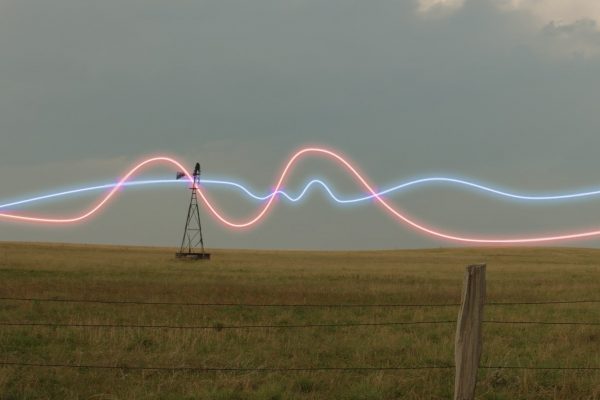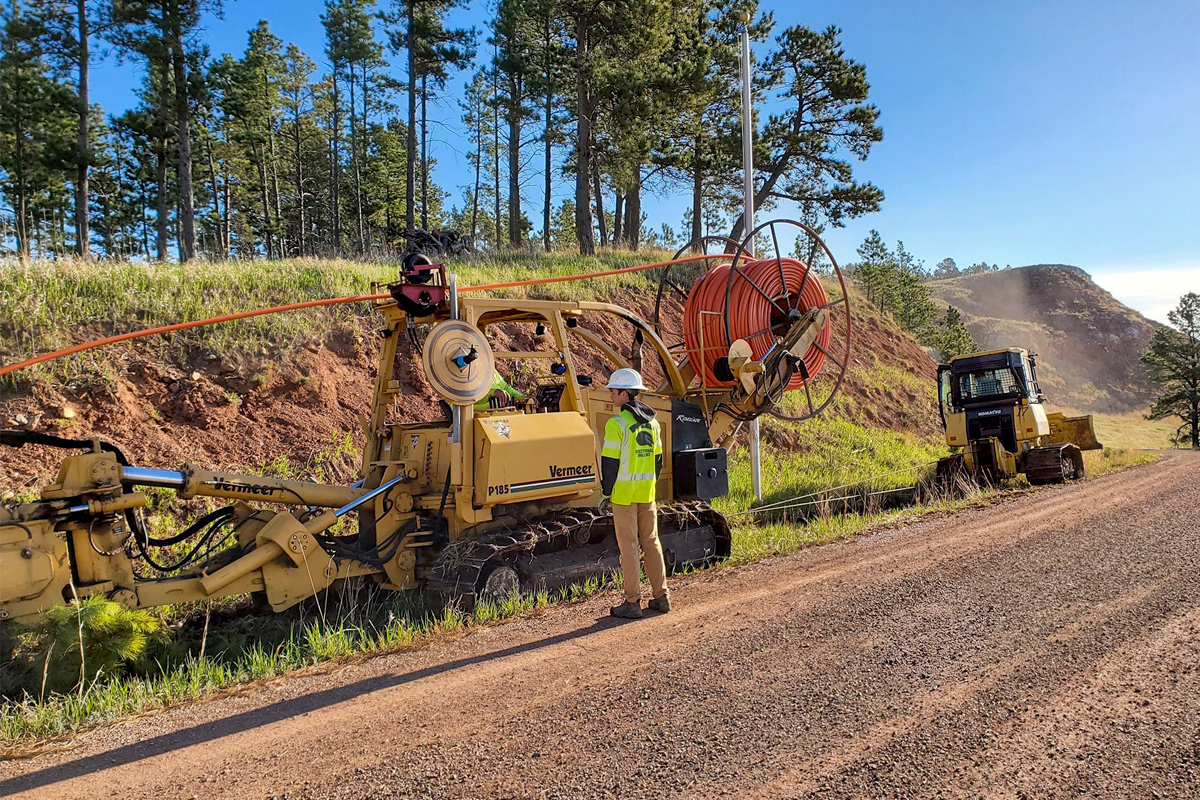
SDN Communications constantly evaluates its entire network and plans for the future. The pandemic hasn’t changed that – it was a proof of performance.
“As the pandemic drove internet usage, we had to ask ourselves, ‘is the network ready?’” said Jake VanDewater, Vice President of Engineering, Operations and IT. “As we went into it, we felt confident and proved we were ready for it.”
The projects planned for 2021 will continue to position the company’s network to meet future needs and improve the network in four key areas:
- Future capacity needs
- Geographic expansion
- Resiliency
- Technical resources
All with the end goal of delivering UPTIME to users.
INFRASTRUCTURE UPGRADES
“We’re doing a number of network upgrades to make sure it’s ready for the future and continued growth and dependency,” VanDewater said.
Those upgrades include bumping up main and most efficient high-bandwidth fiber routes, or the backbone, from 100 gigabits per second (Gbps) to 200 Gbps. Last year saw the start of the updated transport network. It runs parallel to the current network and migrates over to a different vendor.
The new network has greater capacity and enables SDN to deliver services at a better rate. This year’s project includes connecting segments from Sioux Falls to Spearfish, Spearfish to Selby, Presho to Aberdeen and Rapid City to Denver. VanDewater estimates it will take up to three years to complete this update across the network.
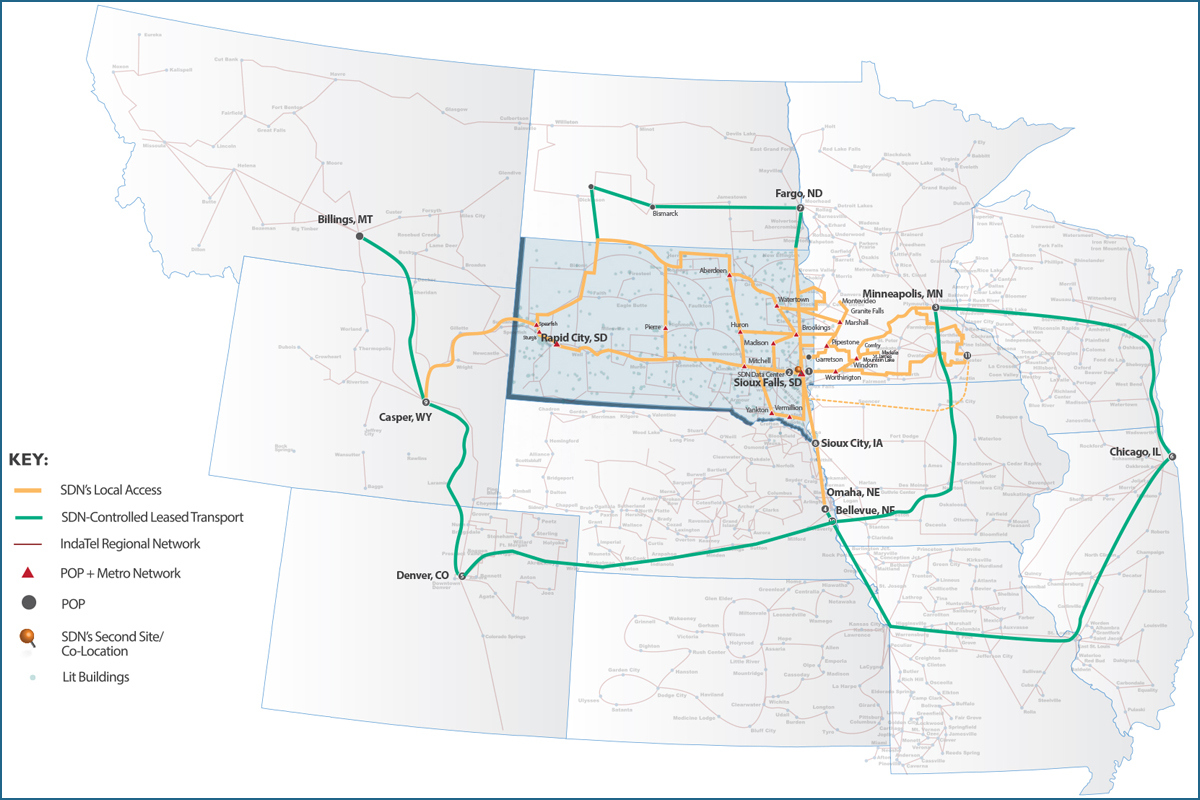
BUILDING CONNECTIVITY
SDN saw a 39% increase in internet usage in 2020. A major focus for this year is continued planning for capacity over its peak demands. That includes improving the geo-diverse connections with Tier 1 providers between large cities such as Denver, Minneapolis and Omaha.
SDN currently leases its connection to Denver but in 2021 will leverage partnerships to create its own path to offer another option. Having access to multiple routes builds redundancies and versatility for customers, VanDewater said, which is important for reliable connectivity.
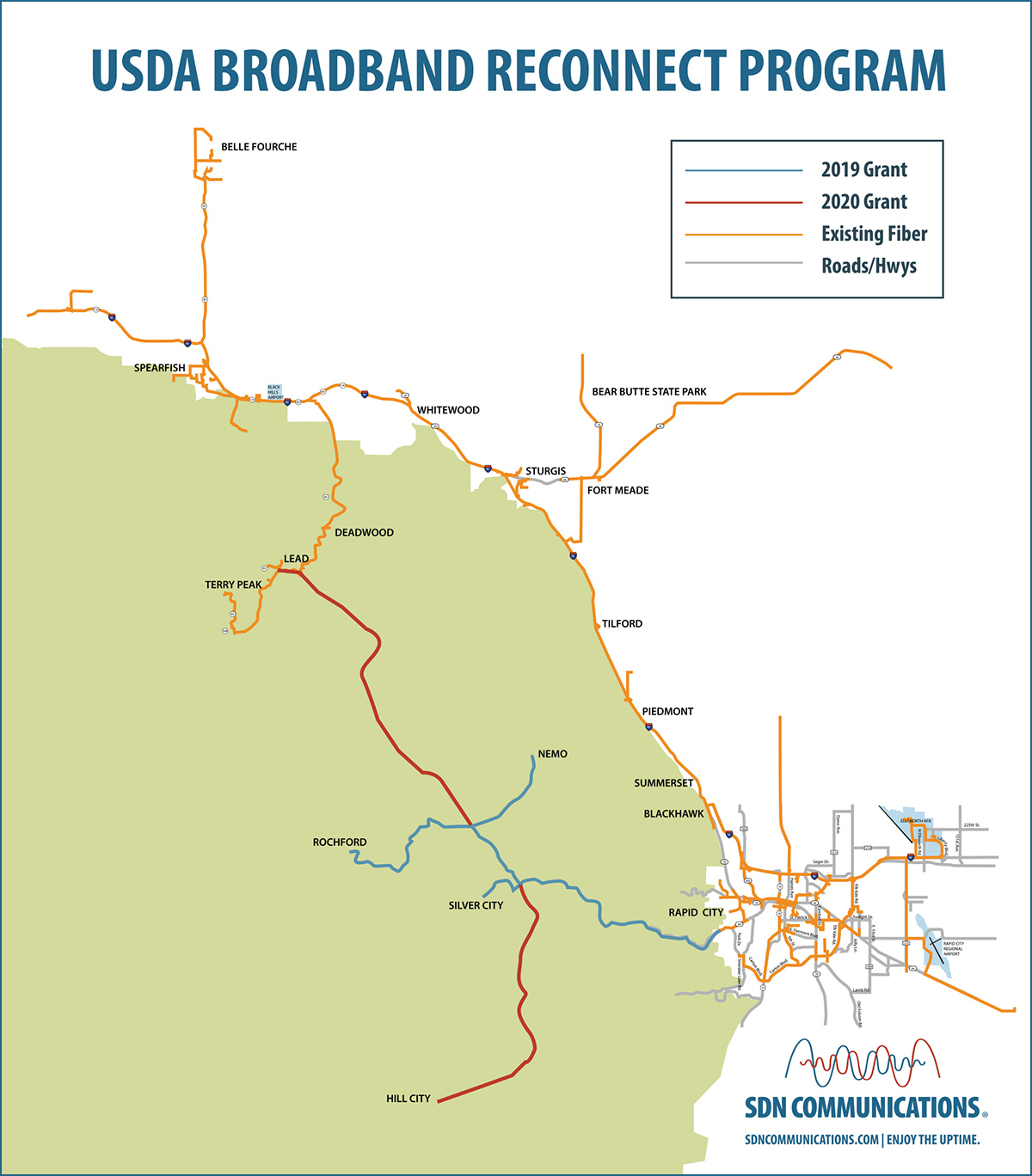
SDN and its crews will also begin construction on one of two multi-million dollar connectivity expansion projects in the Black Hills – after the permits and other paperwork are complete, of course.
The U.S. Department of Agriculture announced in 2020 that SDN won two rounds of grants through the federal ReConnect Program – one for its application in 2019 and one in 2020. The program offers federal funding to bring broadband connectivity to unserved and underserved areas of rural America.
The first grant will connect Rochford, Nemo and Silver City – shown in blue on the map. The second expands upon the first to connect it to Lead going north and south to Hill City, along the Highway 385 corridor – shown in red on the map.
In total, SDN will contribute $3.1 million to the projects which will build out approximately 80 miles of fiber and include eleven towers. The infrastructure will deliver fixed wireless technology to residents and businesses and will hopefully lure wireless carriers to improve cell and data coverage in those high-traffic tourist areas. Those towers will be located on U.S. Forestry Service land.
“We’re working on our strategy related to the timeline and the best approach for those potential customers for the fiber and the towers,” VanDewater said.
Permitting and environmental studies must be done first. The goal is to have that process complete and to break ground later this spring or early summer. SDN has until 2025 to complete construction on both projects.
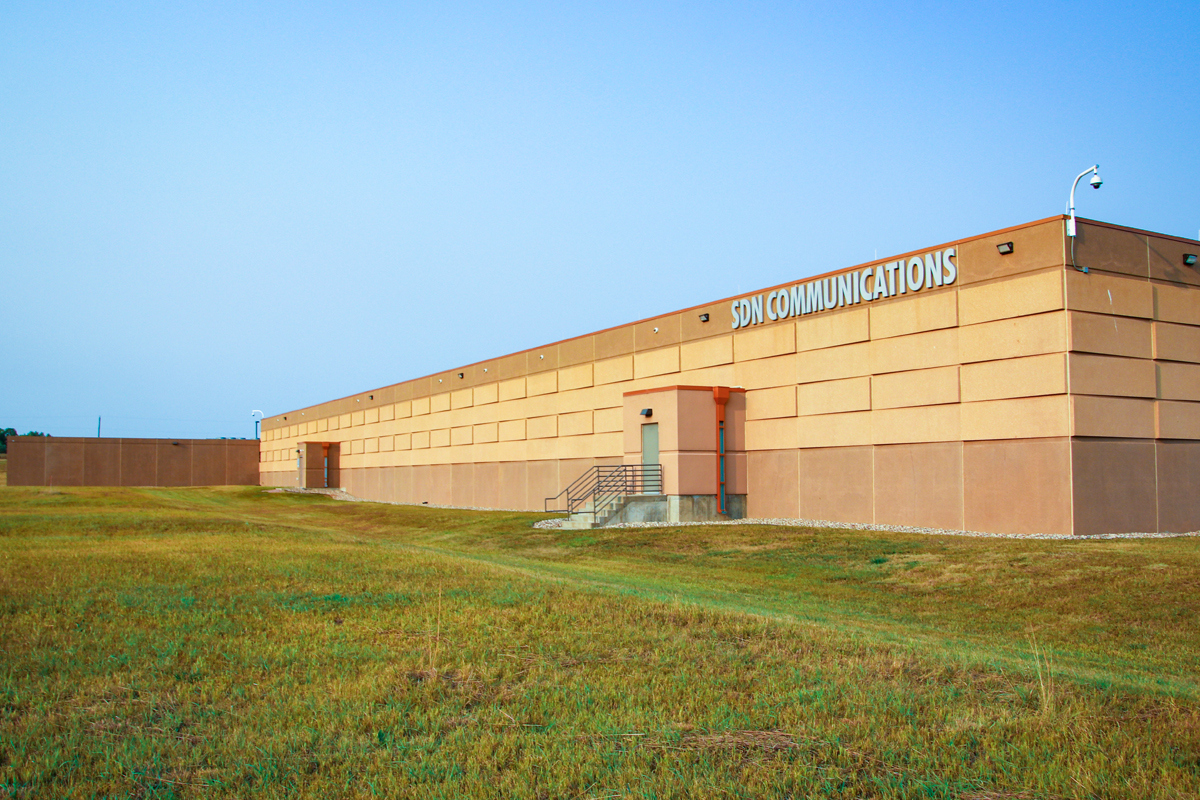
DATA CENTER EXPANSION
The final major project is one VanDewater says you may not immediately think of when hopping on the internet but plays an important role in delivering reliable services.
SDN will consider doubling its Data Center on LaMesa Drive northwest of Sioux Falls. Construction consultants are helping with early engineering phases for a 25,000 square foot expansion.
SDN built the existing data center in 2012 in the northwest corner of Sioux Falls and designed it to be scalable. Pod 1 currently serves as a switch site location, colocation facility, data center, disaster recovery site, and point of presence while also offering some office space and meeting rooms.
Pod 2 will add more data center space and will be built with 12-inch-thick concrete walls, it’s designed to withstand extreme weather conditions, ensuring a resilient infrastructure and redundant utility operations.
SDN is currently talking with potential tenants for the new data center space and looking for others who are interested.
SDN is a leader in providing business internet, private networking and cloud connectivity to businesses and organizations in communities such as Sioux Falls, Rapid City, Worthington, and the surrounding areas.

